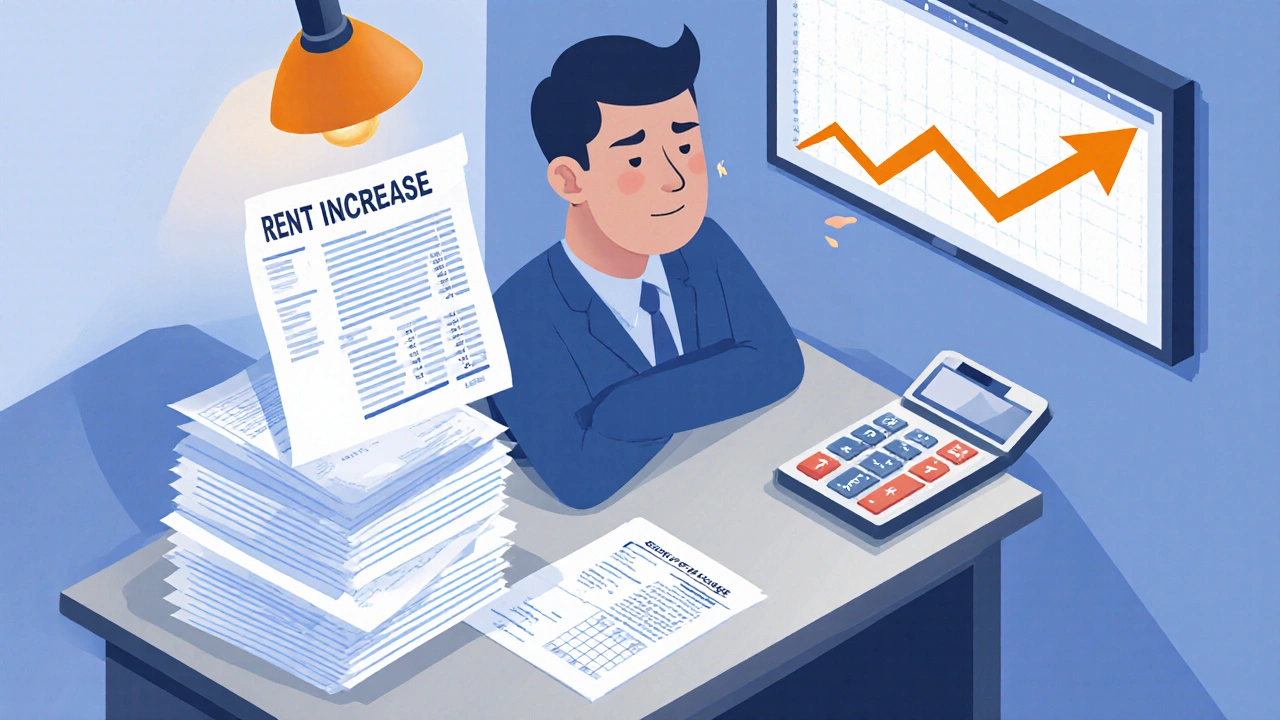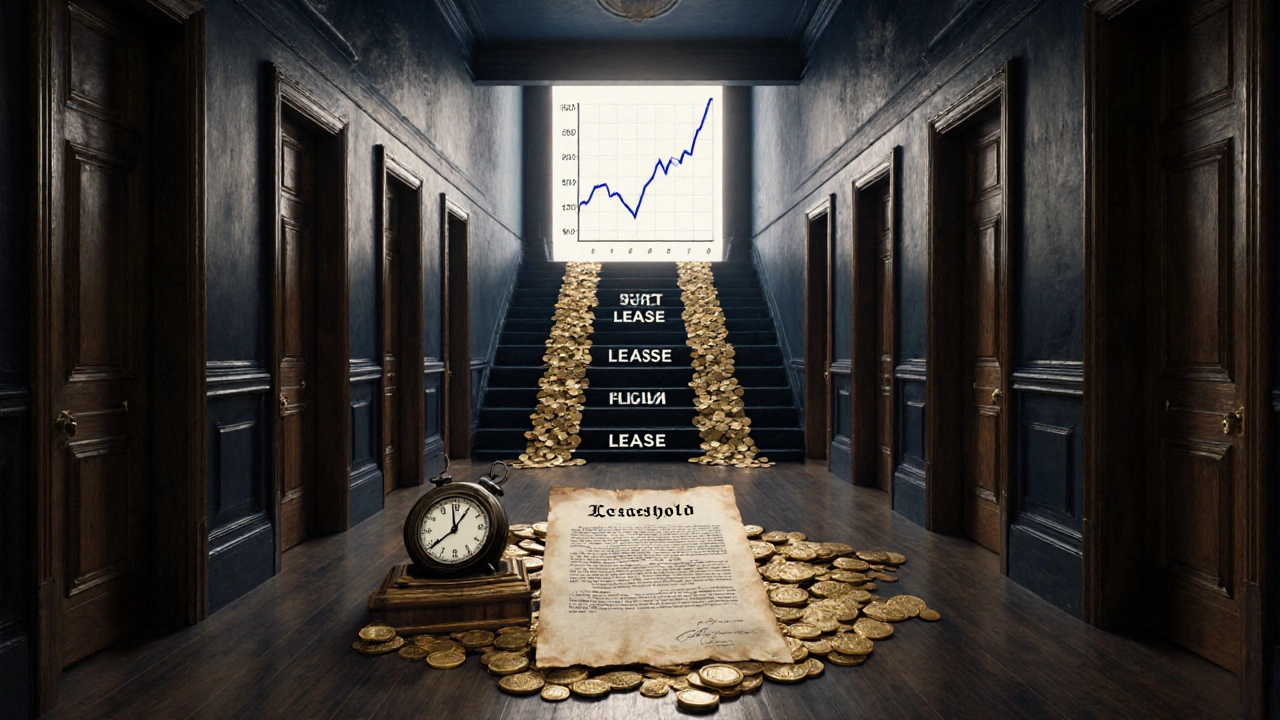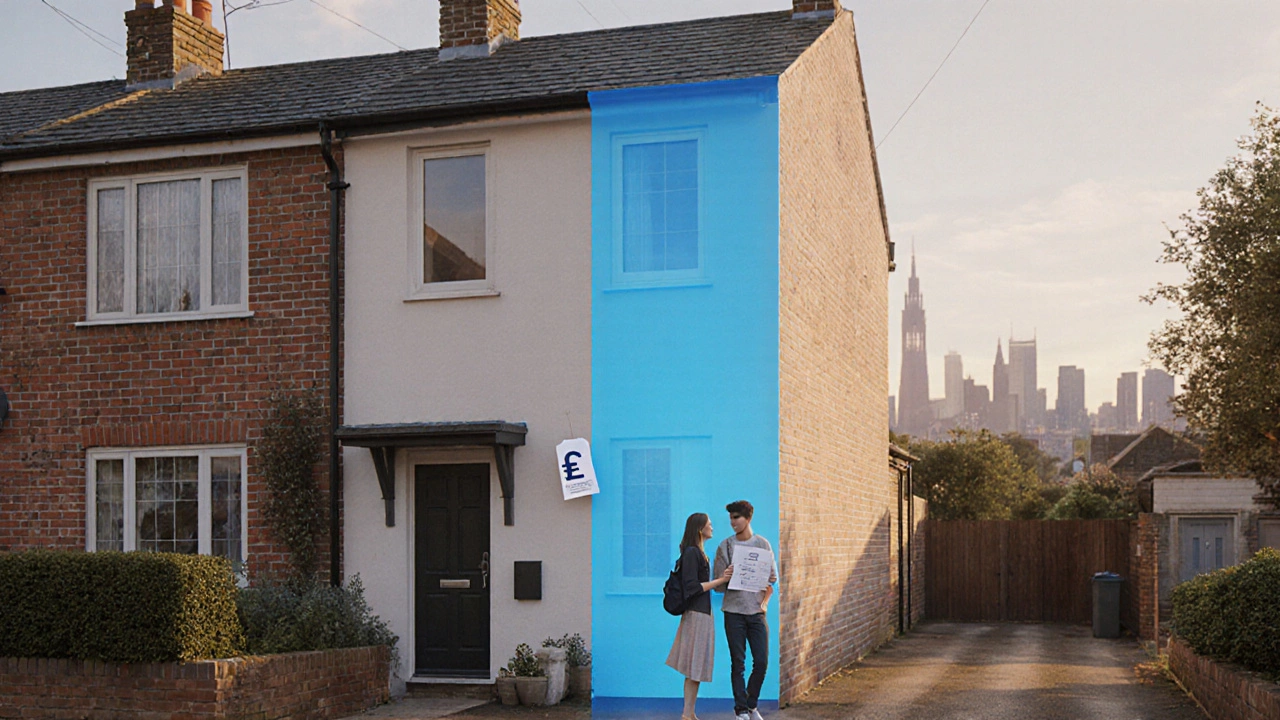Shared Ownership Cost Calculator
Calculate Your Shared Ownership Costs
See how shared ownership compares to full ownership with this calculator. Input your estimated values to understand the true monthly costs and long-term financial impact.
Your Monthly Costs
Key Takeaways
After calculating your costs, you'll see a detailed breakdown of how shared ownership compares to full ownership.
Imagine buying a slice of a house for a fraction of the price-sounds like a win, right? But what if that slice comes with hidden fees, strict rules, and a long‑term cost that outweighs the initial savings? Below we break down the real downsides of owning a share in a shared‑ownership property so you can decide whether the trade‑off is worth it.
What is a Shared‑Ownership Share?
When you step into a shared ownership share you purchase a percentage-usually between 25% and 75%-of a property while paying rent on the remaining portion. The arrangement is typically managed by a housing association or a special‑purpose developer, and the lease is usually a long‑term leasehold arrangement. You own part of the building, not the freehold, which means you share responsibilities and costs with the landlord.
Financial Cons That Bite
Even though the upfront price is lower, the ongoing cash flow can surprise you.
- Rent on the unsold share - You pay market‑rate rent on the portion you don’t own. If you buy a 50% share, you still pay rent on the other 50%, and that rent can increase each year, eroding your savings.
- Service charges and maintenance - As a leaseholder, you’re hit with monthly service charge fees for communal areas, insurance, and repairs. These fees are often passed straight through from the housing association and can jump when major works are needed.
- Mortgage complexities - Lenders view a shared‑ownership mortgage as riskier, so you may face higher interest rates or stricter affordability tests. Some banks require a larger deposit for the share you’re buying, which can offset the lower purchase price.
Limited Control and Flexibility
Owning a slice doesn’t give you free reign over the whole property.
- Renovation restrictions - Any structural changes usually need written approval from the housing association. Want to knock down a wall? You’ll likely hit a bureaucratic wall first.
- Resale limitations - You can only sell your share back to the association or to approved buyers, which narrows the pool of potential purchasers and can delay a sale.
- Valuation swings - Your share’s market value is tied to the full property’s valuation, which can be volatile. If the market dips, you might owe more on your mortgage than the share is worth.

Long‑Term Cost Implications
The biggest surprise often shows up years later when you try to increase your ownership.
- Staircasing expenses - Buying additional percentages, called staircasing, incurs valuation fees, legal costs, and possibly higher stamp duty each time you increase your share.
- Slower equity build‑up - Because you’re still paying rent on the unsold portion, a sizable chunk of your monthly payment goes to the landlord instead of building your own equity.
- Leasehold premiums - As your lease shortens, you may need to extend it, which can cost thousands of pounds. The shorter the lease, the lower the resale value of your share.
Administrative and Legal Hurdles
Dealing with a third‑party landlord adds layers of paperwork.
- Housing association bureaucracy - Requests for repairs, permission for alterations, or staircasing can take weeks to process, leaving you in limbo.
- Ground rent and other levies - Some lease agreements include a ground rent that escalates every few years, adding an unexpected cost line.
- Policy changes - Government schemes evolve. A future change could tighten eligibility or alter the way rent is calculated, affecting your monthly outgoings.
Risk Factors You Can’t Ignore
Shared‑ownership isn’t immune to market forces.
- Market downturn impact - If house prices fall, the value of your share drops, but the rent on the remaining share may stay the same, squeezing your cash flow.
- Interest‑rate risk - Many shared‑ownership mortgages are variable. A rate rise directly hikes your mortgage payment, while rent may also rise, creating a double hit.
- Early‑exit penalties - If you need to move before you’ve staircased to full ownership, the association may charge a penalty or sell your share at a discounted price.

Mitigating Some of the Cons
While the drawbacks are real, a few strategies can soften the blow.
- Budget for rent increases: Set aside 5‑10% of your monthly payment to cover potential rent hikes.
- Negotiate service charge caps: Some associations will agree to a maximum annual increase during the lease signing.
- Plan staircasing early: Aim to increase your share to at least 75% within the first five years to accelerate equity buildup.
- Shop around for lenders: Some specialist banks offer lower rates for shared‑ownership mortgages.
- Stay informed on policy shifts: Follow government housing updates so you aren’t caught off‑guard by new rules.
Quick Comparison of the Main Cons
| Con | Why It Matters | Typical Mitigation |
|---|---|---|
| Rent on unsold portion | Erodes savings; rent can rise annually | Budget for increases; consider staircasing sooner |
| Service charges & maintenance | Unpredictable spikes after major works | Negotiate caps; set aside a maintenance fund |
| Limited resale pool | Harder to sell; may need to accept lower price | Maintain good condition; improve marketability early |
| Staircasing costs | Fees add up each time you buy more share | Plan larger increments; budget for legal/valuation fees |
| Leasehold restrictions | Permissions required for alterations | Get written consent before any work; keep records |
Frequently Asked Questions
Can I rent out my shared‑ownership share?
Generally no. Most housing associations prohibit sub‑letting without explicit permission, and even then, you may need to meet strict eligibility criteria.
What happens if the housing association sells the remaining share?
You’ll continue paying rent to the new landlord on the unsold portion. Your lease terms stay the same, but you might see a rent adjustment if the new owner resets rates.
Is staircasing mandatory?
No, it’s optional. However, without staircasing you’ll keep paying rent, and the equity you build will be slower.
How are service charges calculated?
They’re usually based on the total cost of maintaining communal areas divided by the number of leaseholds. Major projects (e.g., roof replacement) can cause one‑off spikes.
Do I get mortgage interest tax relief on a shared‑ownership loan?
In the UK, mortgage interest relief is limited to higher‑rate taxpayers and only up to a certain amount. It applies the same way to shared‑ownership mortgages as to standard ones.
Understanding the cons of owning a share gives you a clearer picture of whether the model fits your financial goals. If you can budget for rent, service charges, and staircasing fees while staying comfortable with the lease restrictions, shared ownership can still be a stepping stone onto the property ladder. Otherwise, you might be better off renting longer or saving for a full purchase.


Corbin Fairweather
I am an expert in real estate focusing on property sales and rentals. I enjoy writing about the latest trends in the real estate market and sharing insights on how to make successful property investments. My passion lies in helping clients find their dream homes and navigating the complexities of real estate transactions. In my free time, I enjoy hiking and capturing the beauty of landscapes through photography.
view all postsWrite a comment